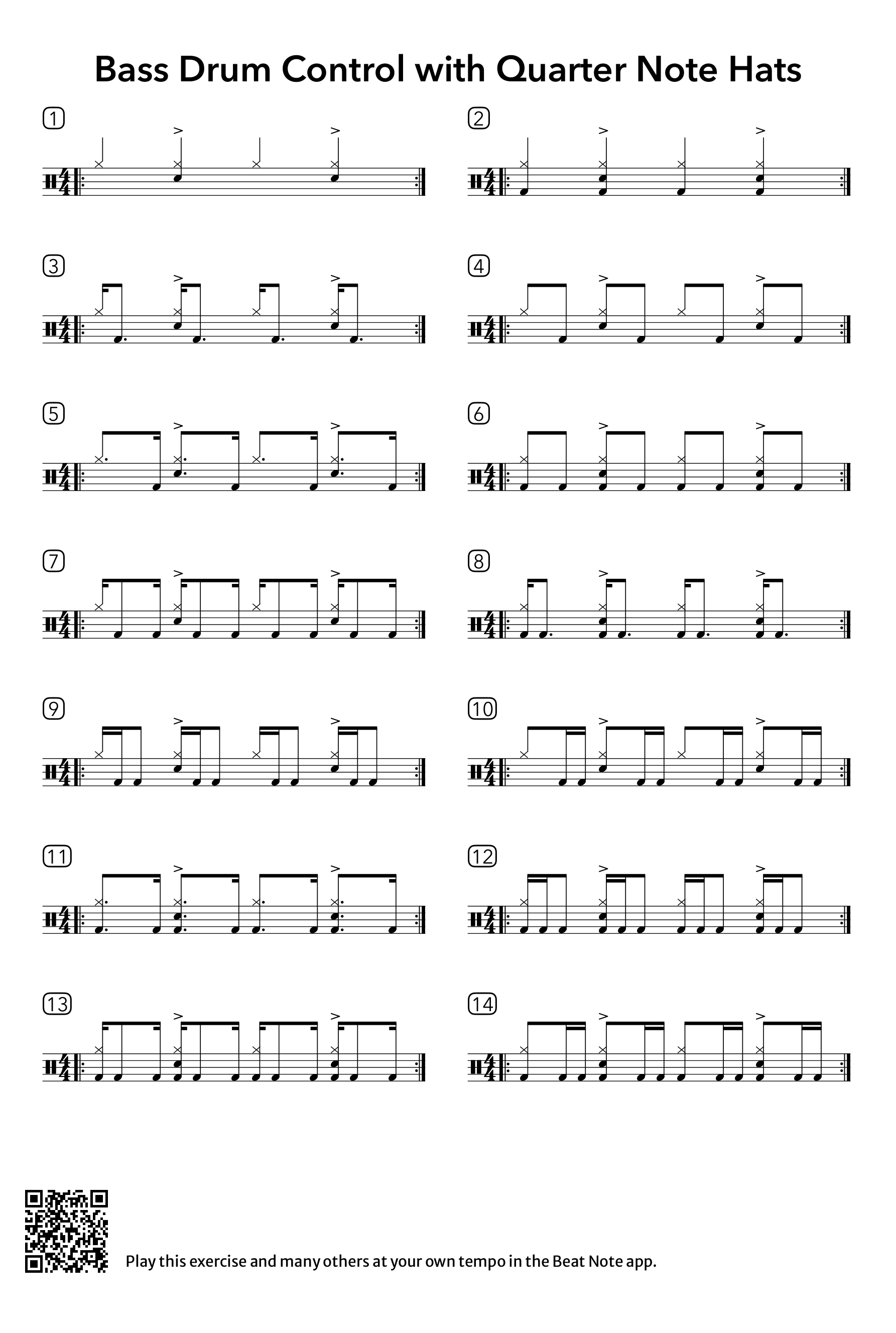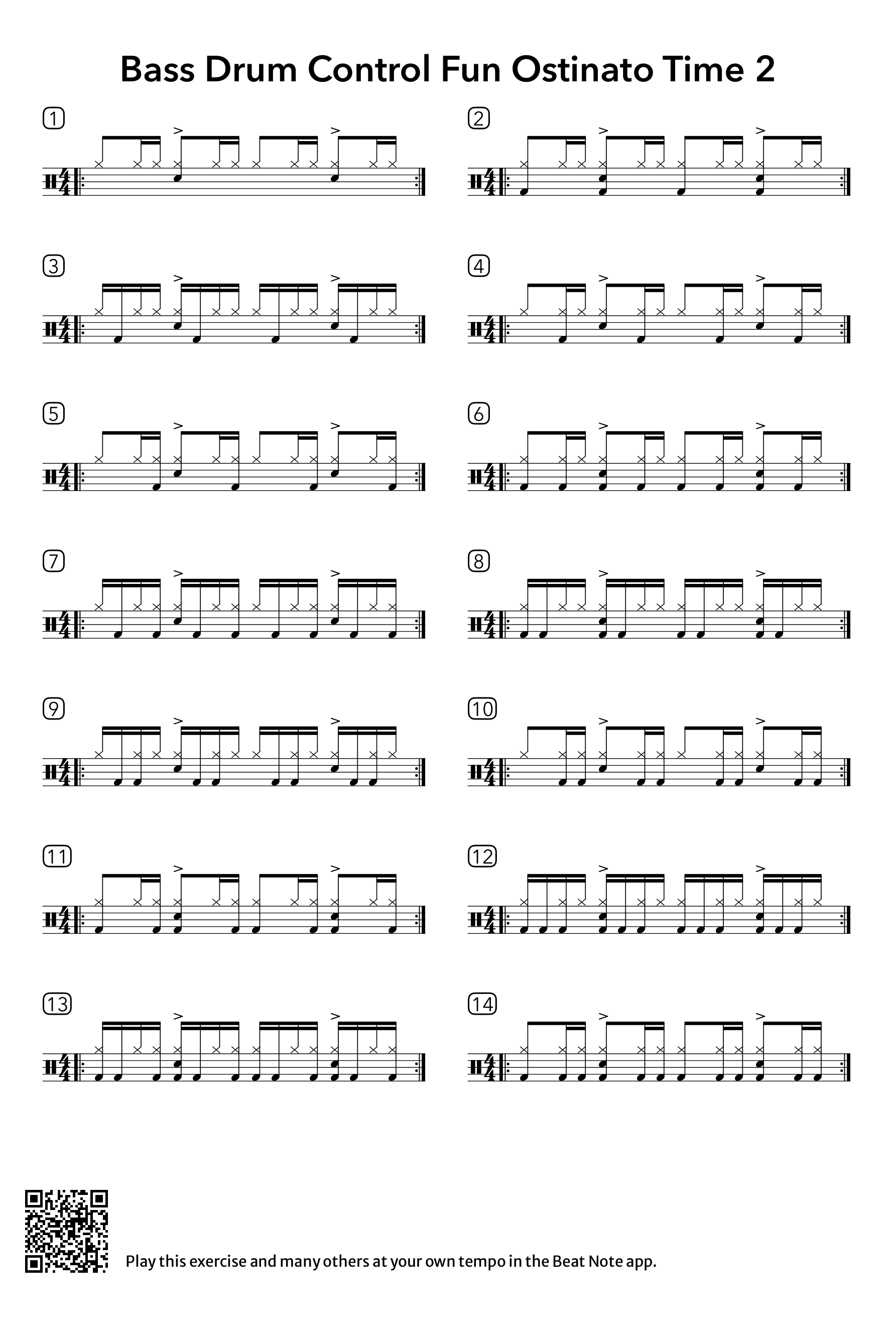How fast can you play with precision? A more critical question is: how fast can you hear?
Your ability to accurately hear rhythms in time affects how precisely you can execute them. If you can hear it, you can say it, then you definitely can play it; once you iron out the mechanics, of course :) Let’s apply this to our feet and delve into all the basic bass drum patterns; then, we’ll crank up the heat in part 2.
In This Article
Tool And Technique Tips
Single Or Double Pedal?
For single-pedal players, I highly recommend working through these exercises with your non-bass drum foot, too. Use your hi-hat, or move that foot over to the kick.
For double pedal players, isolate each foot to work through these exercises. You can also alternate foot strokes with your preferred sticking.
Heel Up Or Heel Down?
Both have their benefits. Heel down is excellent for developing control and strength up to mid-tempos. Heel up has many gears, like our hands, and is the path to balance for speed, control, and power. Learning both is an essential part of the skill tree for mastery of your sound.
Now, let’s work through the interdependence it takes to get your kick timing locked and ready to take on most musical vocabulary.
Pay Attention To Those 16th Partials
Take these from 60 BPM up to however fast you can comfortably play while staying relaxed and rhythmically accurate. Try bumping 5-10 BPM every five reps. If you hear any hiccups or speed bumps in your playing, slow down a hair and sit on that particular rhythm to iron out the timing. If you don’t rush the process, the investment will return three-fold.
16th Note Bass Drum Exercises
Bass Drum Control with 16th Note Hats
Hi-hat plays 16ths. Line the kick notes up with your 16ths, no flams or sloppy joes.
Bass Drum Control with 8th Note Hats
Hats play 8ths. A little more space in the hands strengthens the timing in our feet.
Bass Drum Control with Quarter Note Hats
Quarter note hands for more controlled feet. Feel the internal pulse and control the timing.
Advanced Bass Drum Pattern Exercises
Bass Drum Control Fun Ostinato Time 1
1-e-& ostinato time!
Bass Drum Control Fun Ostinato Time 2
1-&-a ostinato time!
In the second part of this series, we’ll explore more advanced bass drum patterns including triplets, sextuplets, and 32nd notes. We’ll also dive into advanced pedal techniques, spring tension concepts, and high-speed control exercises. These upcoming patterns will build upon the 16th note foundation we’ve established here, taking your bass drum technique to the next level.
For now, focus on mastering these foundational exercises with perfect form. Remember that speed comes from control, and control comes from patient, consistent practice. Record yourself regularly and celebrate your progress as you work through these patterns.
Enjoy the journey & happy drumming.
-Z





